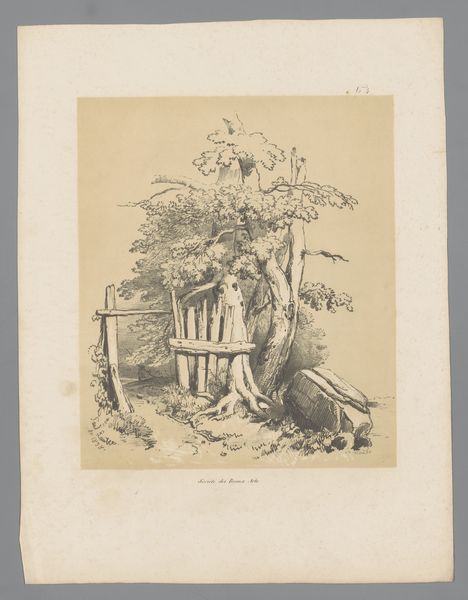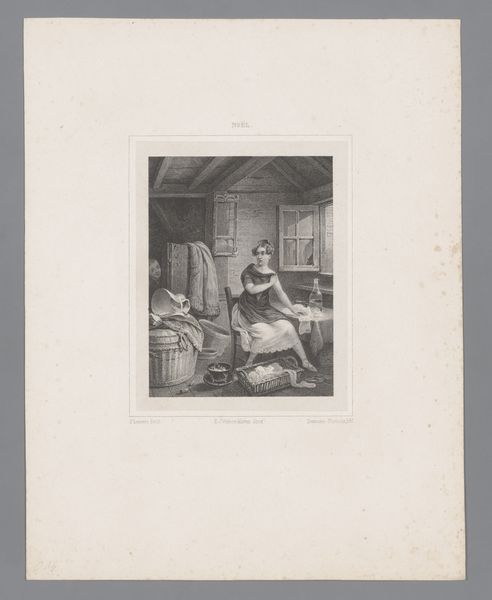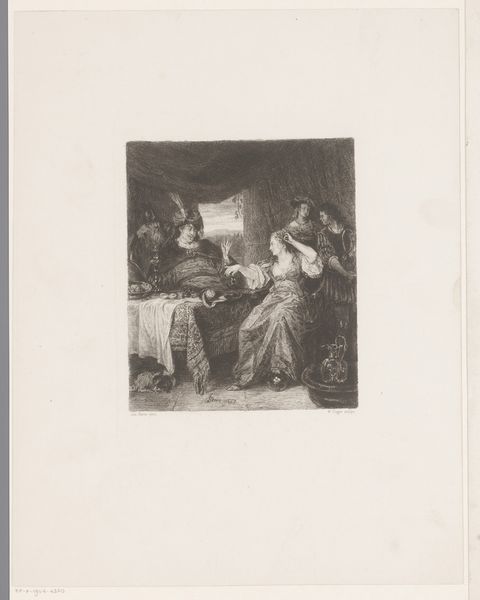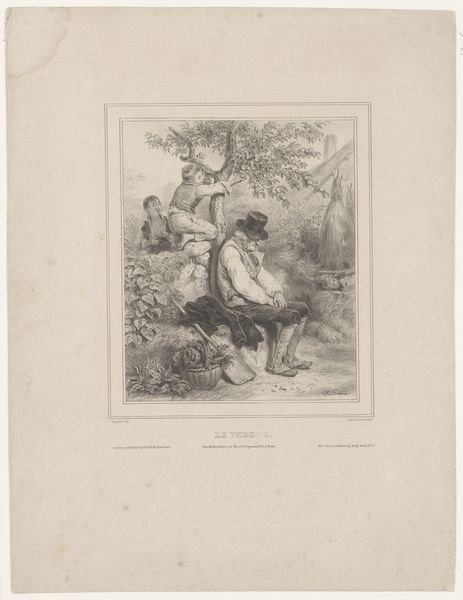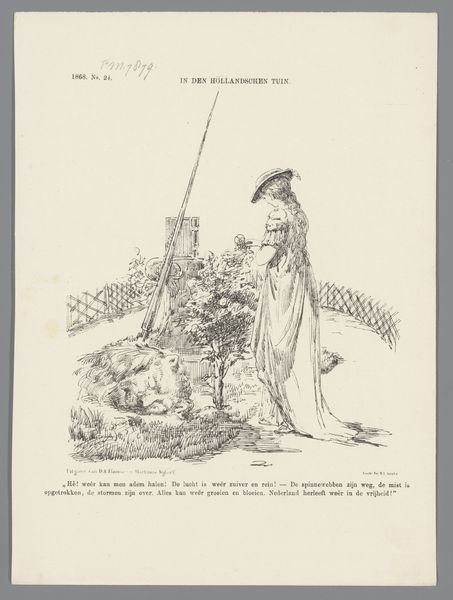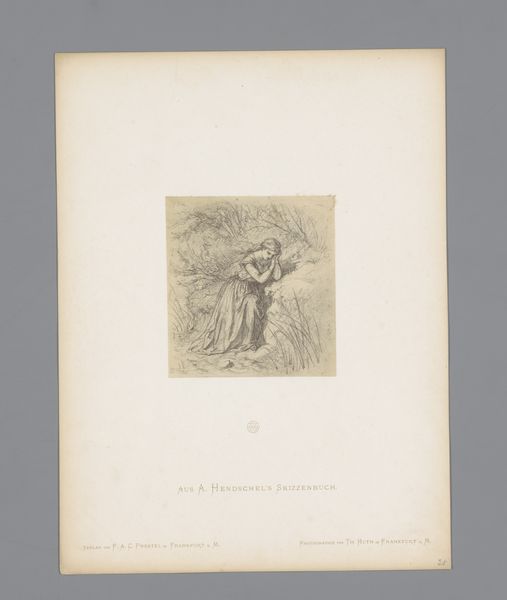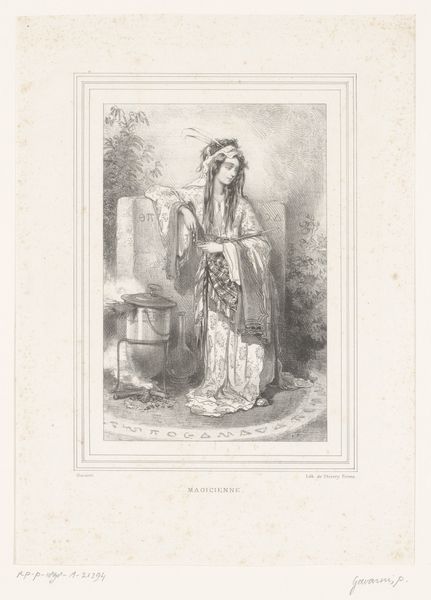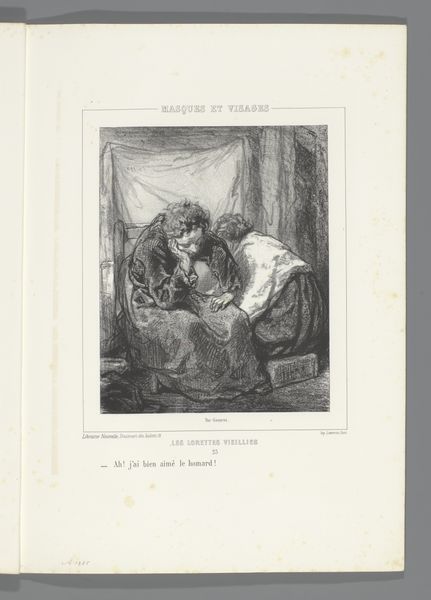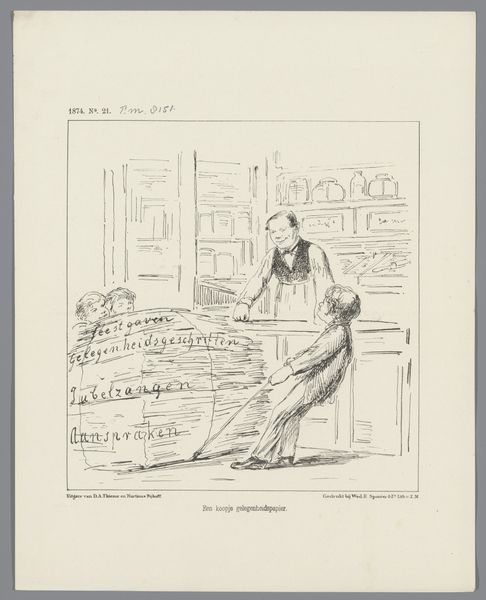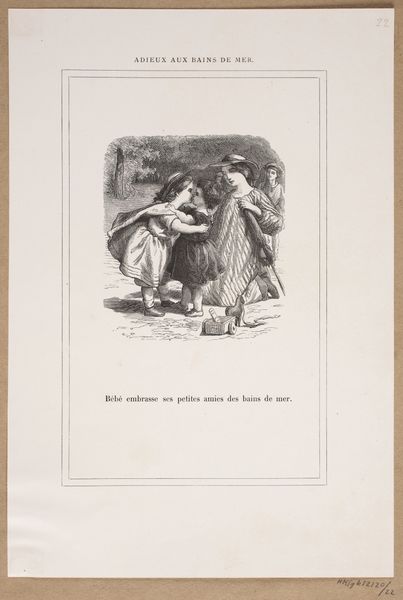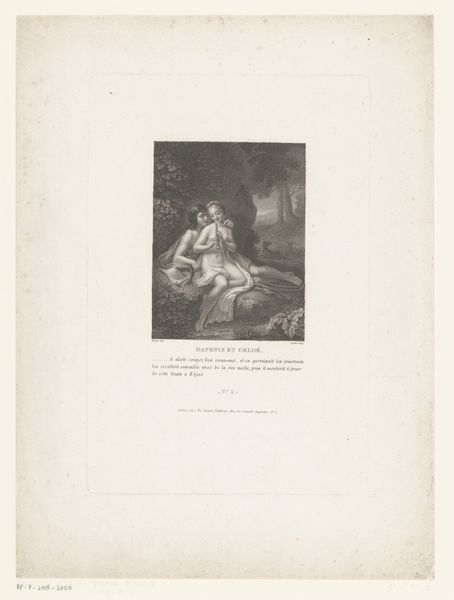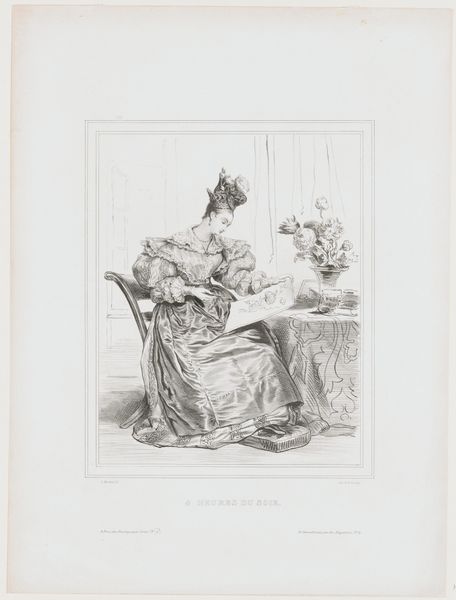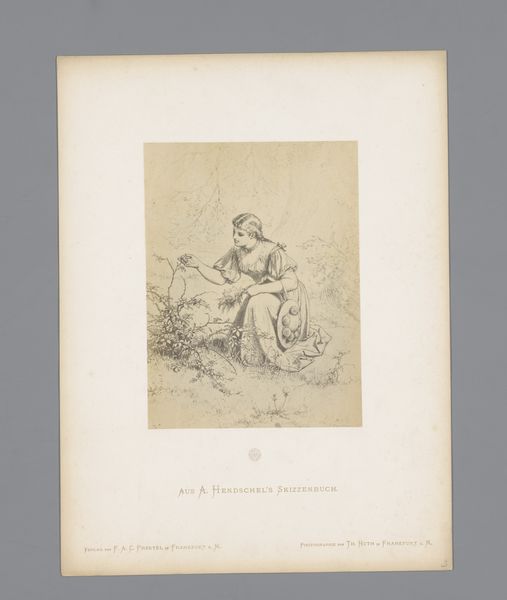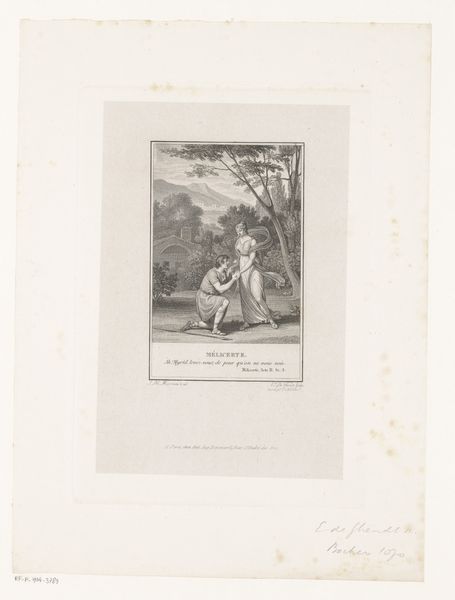
drawing, print, pen
#
drawing
# print
#
caricature
#
pen
Dimensions: height 275 mm, width 215 mm
Copyright: Rijks Museum: Open Domain
Curator: This drawing, titled "Spotprent," created in 1877 by Johan Michaël Schmidt Crans, is a print that combines pen drawing and caricature. The materials and techniques employed are fundamental to understanding its message. What are your initial thoughts? Editor: The immediate impression is one of delicate futility. The stark contrast of the wilting plant against the meticulous detail of the woman’s dress evokes a sense of fragile beauty amidst neglect. Curator: It’s fascinating how Crans uses pen and ink to achieve this level of detail, almost as if he's meticulously documenting a slow failure. The choice of print as a medium is significant. It implies a desire for wider dissemination, turning this intimate scene into a commentary intended for public consumption. Editor: Exactly! I’m drawn to the composition: the woman, likely a symbol of the Dutch nation, watering a plant labeled 'Waterstaats, Handel, Nijverheid’—Dutch infrastructure, trade, and industry—a plant that clearly struggles. The material depiction serves to allegorically show its actual state of being: wilting and deprived. Curator: It's about the means of production reflecting societal structures, wouldn't you say? This image engages directly with economic and social concerns of the time. Who has access to the water? Is the Dutch Maiden adequately resourcing these crucial facets of society? It raises questions about responsibility and resource allocation. Editor: And from a purely visual perspective, the artist guides our eye from the lushness of the woman's attire to the barren branches. It’s a pointed juxtaposition, materially speaking. The 'Dutch Maiden' possesses abundant means – visually translated by detailed folds, ornamentation – and yet the plant is left in dire straits. Curator: So, we’re invited to interpret not only the 'what' but crucially the 'how' and 'why' this critique came into being. Crans critiques political actions via meticulous work with materials and available printmaking technology to engage broader audiences. Editor: Indeed, it prompts us to think about what defines value, both in art and society, at that specific time and perhaps, even today. This meticulous execution invites us to analyze it with meticulous observation and intellectual engagement. Curator: A fruitful reminder that material choices often embody deliberate critique and open dialogues regarding social responsibility and artistic production. Editor: Absolutely, revealing how a wilting plant drawn in pen can bloom into a powerful socio-political analysis.
Comments
No comments
Be the first to comment and join the conversation on the ultimate creative platform.
